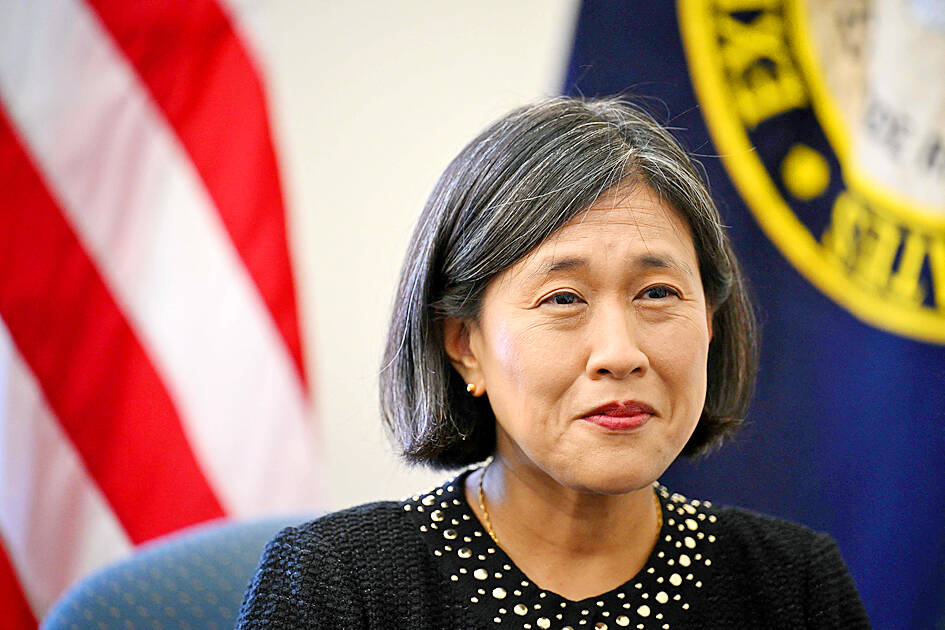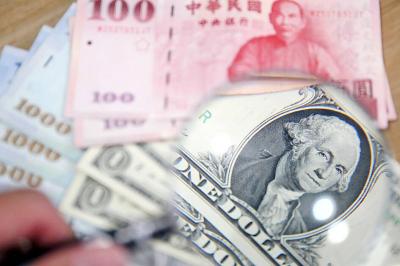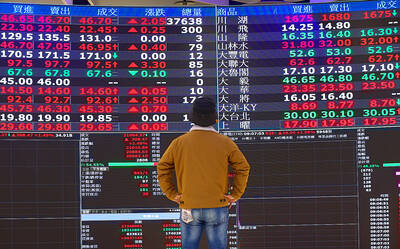US Trade Representative Katherine Tai (戴琪) defended stiff tariff hikes against countries such as China, saying that paired with investment, they were a “legitimate and constructive” tool for reinvigorating domestic industries.
Tai’s comments come a week after sharp tariff increases on Chinese electric vehicles (EVs), EV batteries and solar cells took effect — with levies down the line on other products also recently finalized.
The latest moves targeting US$18 billion in Chinese goods come weeks before next month’s US presidential election, with Democrats and Republicans pushing a hard line on China as competition between Washington and Beijing intensifies.

Photo: AFP
In an interview on Thursday looking back on her term, Tai defended the use of tariffs as a means “to counterbalance unfair trade” with China.
The latest hikes, she added, aim to help US clean energy investments “take root.”
“We wanted to make sure that those increased areas are paired with the investments that we’re making,” Tai said, referring to efforts to build domestic industries, such as those for EVs, batteries and semiconductors.
“Once you’ve lost an industry, bringing it back from the brink is much, much harder,” she said.
The US manufacturing industry has declined in recent decades, a period that saw production shift offshore and heightened competition from China.
China’s share of global manufacturing output has been about 30 percent, significantly above the US and other developed countries.
Tai said that while the US has seen new manufacturing investment, “in order to bring manufacturing back across the board, it is going to take more time.”
However, she stressed that Washington is not aiming to bring all production back on its shores, but to recover from earlier “levels of erosion.”
US President Joe Biden has largely maintained tariffs imposed by former US president Donald Trump, which affected some US$300 billion in goods from China. The hikes this year include earlier products and some additional ones.
An estimate by think tank the Tax Foundation in June noted the cumulative impact of tariffs would “reduce long-run GDP by 0.2 percent.”
Further increases proposed by Trump, the Republican Party’s nominee for president, could “shrink GDP by at least 0.8 percent,” the foundation added.
Tai, who has held office for more than three years, is also hopeful that Washington would reach new deals with European partners — referring to ongoing talks on critical minerals.
A key factor in negotiations on a critical minerals deal has been labor standards and how these would be upheld.
“I remain very, very optimistic that we will be able to achieve these kinds of new agreements that put workers at their center,” she said.
She sounded a positive note on steel and aluminum talks as well.
Biden has paused Trump-era tariffs on most European steel and aluminum in favor of quotas allowing some imports without levies, but both sides face a complicated task in resolving an impasse.
This is because they are also pushing for the decarbonization of industries and to combat non-market practices from parties such as China.
“We’re not just trying to accomplish more trade. We’re trying to accomplish better trade,” Tai said.
She pointed to the US-Mexico-Canada Agreement, which allows enforcement actions against factories over labor violations, as an example of “worker-centered trade.”
She added that Washington wants to “expand the conversation beyond North America” and to Europe.
However, the trade chief’s term has seen challenges including a snag with the trade pillar of the Indo-Pacific Economic Framework for Prosperity — a pact involving Asia-Pacific partners — amid labor concerns.
Tai pushed back on the view that labor provisions alone have caused “insurmountable challenges,” saying countries are still making progress this year.
She added that Washington remains present in the region: “We are there, we have been, we are engaging.”

The US dollar was trading at NT$29.7 at 10am today on the Taipei Foreign Exchange, as the New Taiwan dollar gained NT$1.364 from the previous close last week. The NT dollar continued to rise today, after surging 3.07 percent on Friday. After opening at NT$30.91, the NT dollar gained more than NT$1 in just 15 minutes, briefly passing the NT$30 mark. Before the US Department of the Treasury's semi-annual currency report came out, expectations that the NT dollar would keep rising were already building. The NT dollar on Friday closed at NT$31.064, up by NT$0.953 — a 3.07 percent single-day gain. Today,

‘SHORT TERM’: The local currency would likely remain strong in the near term, driven by anticipated US trade pressure, capital inflows and expectations of a US Fed rate cut The US dollar is expected to fall below NT$30 in the near term, as traders anticipate increased pressure from Washington for Taiwan to allow the New Taiwan dollar to appreciate, Cathay United Bank (國泰世華銀行) chief economist Lin Chi-chao (林啟超) said. Following a sharp drop in the greenback against the NT dollar on Friday, Lin told the Central News Agency that the local currency is likely to remain strong in the short term, driven in part by market psychology surrounding anticipated US policy pressure. On Friday, the US dollar fell NT$0.953, or 3.07 percent, closing at NT$31.064 — its lowest level since Jan.

The New Taiwan dollar and Taiwanese stocks surged on signs that trade tensions between the world’s top two economies might start easing and as US tech earnings boosted the outlook of the nation’s semiconductor exports. The NT dollar strengthened as much as 3.8 percent versus the US dollar to 30.815, the biggest intraday gain since January 2011, closing at NT$31.064. The benchmark TAIEX jumped 2.73 percent to outperform the region’s equity gauges. Outlook for global trade improved after China said it is assessing possible trade talks with the US, providing a boost for the nation’s currency and shares. As the NT dollar

The Financial Supervisory Commission (FSC) yesterday met with some of the nation’s largest insurance companies as a skyrocketing New Taiwan dollar piles pressure on their hundreds of billions of dollars in US bond investments. The commission has asked some life insurance firms, among the biggest Asian holders of US debt, to discuss how the rapidly strengthening NT dollar has impacted their operations, people familiar with the matter said. The meeting took place as the NT dollar jumped as much as 5 percent yesterday, its biggest intraday gain in more than three decades. The local currency surged as exporters rushed to